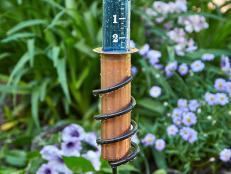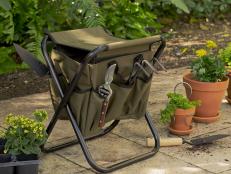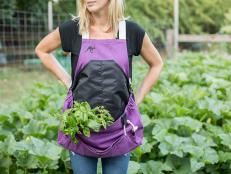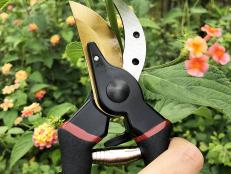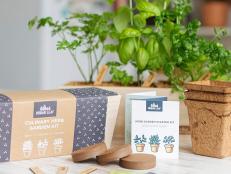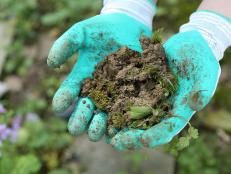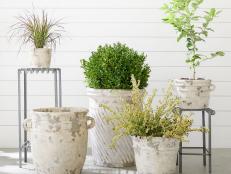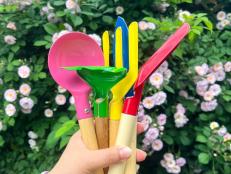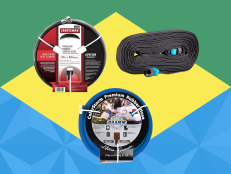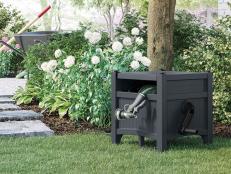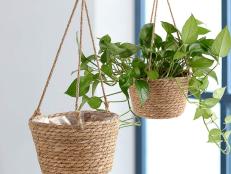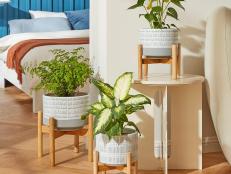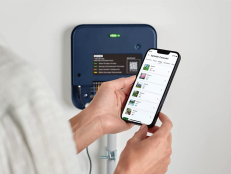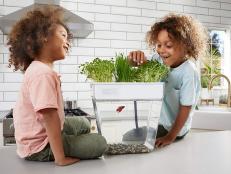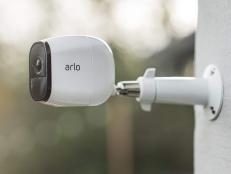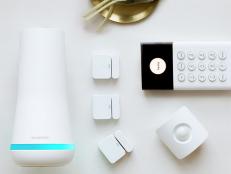This Fool-Proof Hydroponic Garden Is the Easiest and Most Reliable Way to Grow Food at Home Year-Round
I ditched my outdoor garden for this easy-to-maintain indoor hydroponic garden to grow leafy greens and herbs and couldn't be happier about it.

Aphids, cabbage worms, birds, squirrels, rabbits, blight, lack of rain, too much rain, lack of sun, too much sun — so much can go wrong in an outdoor garden, and I've dealt with all of these obstacles and more as a beginner gardener. While there were moments of triumph in my first few years of growing — the first time I pulled a sugar snap pea right off the vine as a crunchy snack, harvesting my first full-sized Cherokee purple tomato and successfully growing celery from a grocery store celery scrap — my outdoor garden wasn't exactly replacing trips to the grocery store for everyday staples like salad greens. The moments of frustration from the constant obstacles, pests, maintenance and general effort the outdoor garden required quickly outgrew the rewards.

Laura James
What if there was a more predictable, reliable way to enjoy fresh harvests for home consumption that isn't dependent on the weather or season? There is, and it's called hydroponic gardening.
What Is Hydroponic Gardening?
Hydroponic gardening is the process of growing plants in a water-based nutrient solution without soil. Indoor hydroponic systems typically feature an LED light source, a water reservoir, seed pods and a place to add liquid nutrients. I had heard of hydroponic gardening from my friend and coworker, Kelly Smith Trimble, a master gardener and senior editorial director at HGTV. She's tested and reviewed several hydroponic garden systems, from AeroGarden's tabletop herb garden to Lettuce Grow's modern-looking Farmstand system, and though my interest was piqued, I was not confident that maintaining it would be as easy for me, a beginner gardener, as it looked for her, an expert. After my lackluster harvests from my outdoor veggie garden, growing hydroponically started to sound more and more appealing. There are several brands that make tabletop hydroponic gardens for herbs and just a few plants, but I knew I wanted something larger for bigger yields but not too large since I live in a small home. While Kelly does like Lettuce Grow's Farmstand, it has a rounded shape and modern look that would feel out of place in my home. Enter Rise Gardens. Rise Gardens sells tabletop gardens as well as family-size gardens for bigger harvests that feature a simpler rectangular shape with a silhouette reminiscent of a bookshelf or cabinet. When Rise reached out asking if I wanted to test one of their gardens, I jumped at the opportunity and decided to give a Double Family Garden a try.
How Rise Gardens Work
Rise Gardens work by circulating water throughout the garden, seed pods fit into small openings in a tray where their roots can absorb liquid nutrients that you add to the water with the help of a connected app (more on that below) and the LED lights act as sunlight. Rise Gardens come in four sizes, which each comes with a certain number of pods, nurseries and nutrients, depending on which option you pick. The Personal Garden, the smallest size available, is a tabletop or countertop garden with eight spots for plants. The freestanding gardens include the Single Family Garden (12 spots for plants), Double Family Garden (24 spots for plants) and Triple Family Garden (36 spots for plants). Rise does sell a 12-pod tray lid you can purchase separately if you want to fit even more plants in the same amount of space. If you start with a Single, you can always add on extension levels to convert to a Double or Triple. I tested the Double Family Garden with 24 spots for plants, and my coworker Shannon Phillips, a managing editor at HGTV, also tested out the Personal Garden with eight spots for plants. After your initial purchase, you can buy more of everything, including a variety of plants, herbs and veggies, on the Rise website. Rise sells accessories like trellis attachments for larger climbing plants like peas or tomatoes that need extra vertical support.

Laura James
Reading through the manual and setting up the garden took me about two hours with the help of one extra set of hands, and starting two nurseries of seed pods and setting up the app took another hour or so. For Shannon, setting up the Personal Garden was much faster; she recommends setting aside an hour to assemble the unit, download the app, connect the garden to WiFi and familiarize yourself with the app's features. Definitely hang on to the manual — I've referenced it multiple times since setting it up for things like detailed cleaning instructions.

The Rise app allows you to input plants into your nurseries and the garden by clicking on the plus sign of the exact level and spot. You can also turn the LED lights on and off from the app (the lights default to turning off at night, though), and you can check water levels and get reminders on when it's time to add more water.
The connected mobile app is easy to use and takes all of the guesswork out of growing. The app provides fool-proof instructions on when to move your seed pods from the nursery, a plastic container and lid where you start the seeds, to the garden after germination, as well as how much and how often to add nutrients to the garden. The app also keeps track of when plants are ready to harvest and provides interesting information on the vitamins and minerals of the plants, plus recipe ideas for what to make with your harvests. When you're ready to add plants, you input the name of the seeds into your nursery in the app and, when the app tells you it's large enough to absorb nutrients, then move it into the physical Garden as well as in the app. The app keeps track of the age of the plants which helps it know what nutrients the Garden will need. About once a week, you will run the "Smart Care" in the app, which tells you exactly how much of what to add. While Shannon and I personally find this extremely helpful as beginner gardeners who don't want to spend much time thinking about what our gardens need, Kelly doesn't love the tech component since she's someone who loves to garden to get her hands dirty and use her phone less, not more.

About once a week, you'll click on the water level icon and select "Run care" to receive detailed instructions from the Smart Care feature to know exactly what nutrients to add based on the type, age and number of plants in your garden. Anytime you complete an action like adding nutrients or doing a deep clean, you mark that task as complete so the app can give accurate reminders for upcoming tasks.
After the initial setup and getting the hang of the system, the weekly maintenance for the Double Family Garden only took about 10 minutes total — less than half of a House Hunters episode. In other words, expect easy-peasy maintenance. The app suggests cleaning out the Double Family Garden about every three months, and though it's not my favorite task, it only takes a couple of hours, which is still a lot less time than I was spending maintaining my outdoor garden.
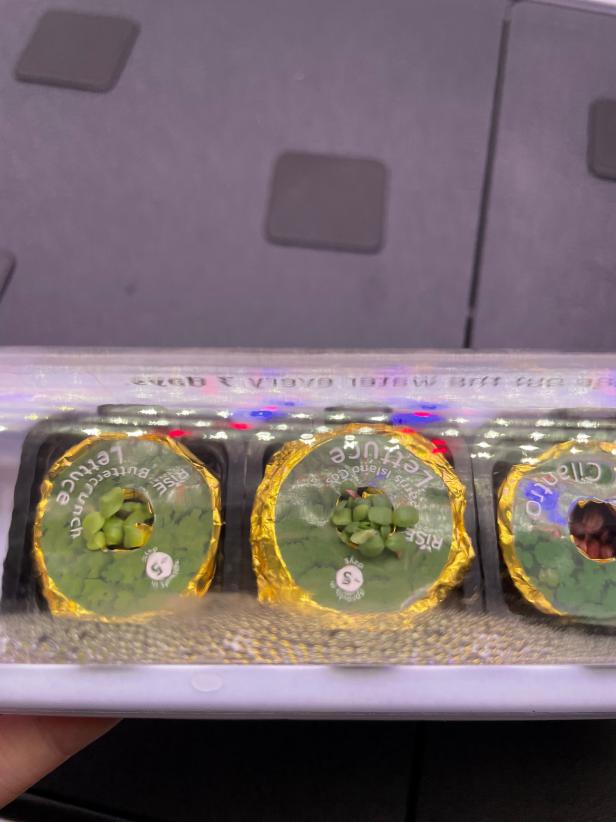
Laura James

Laura James
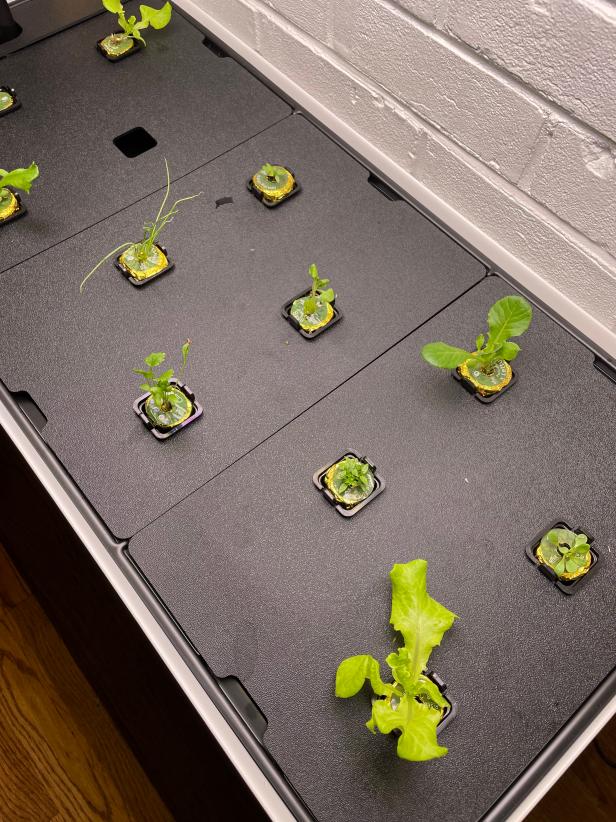
Laura James

Laura James
From arugula to three kinds of lettuce to chamomile, every single seed pod I started sprouted and resulted in a full harvest, which is not the case for my outdoor garden. Germination and harvest time will vary based on the types of plants you grow, but it only took about a month for me to go from starting seeds for leafy greens and herbs to enjoying a garden full to the brim with plants ready to harvest. Rise sells seedless pods so that you can add your own seeds, too. The 4-pack of seedless pods listed on their website was sold out for several months, so to test out my own seeds, I dumped out the seeds from a Rise chamomile seed pod and replaced it with my own chamomile seeds from Sow True Seeds, and they sprouted beautifully! So even if Rise doesn’t sell (or is out of stock of) a vegetable or herb you want to grow, you can always experiment with seeds from other companies — just be sure to consider the size of the mature plant. Herbs and leafy greens will work best, but you may be able to try dwarf varieties of some flowering or fruiting plants, too.
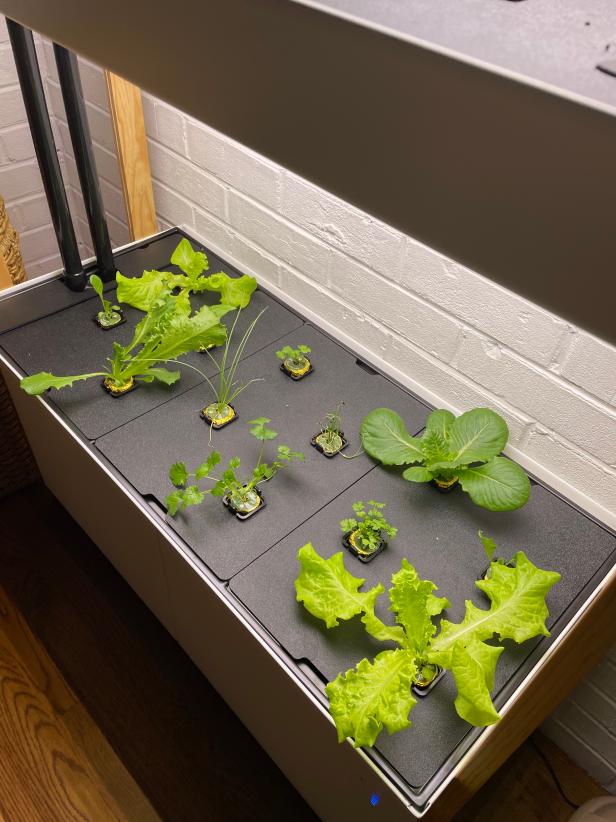
Laura James
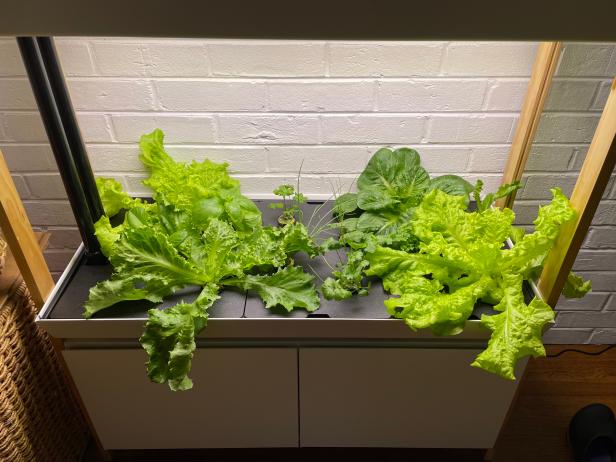
Laura James

Laura James

Laura James
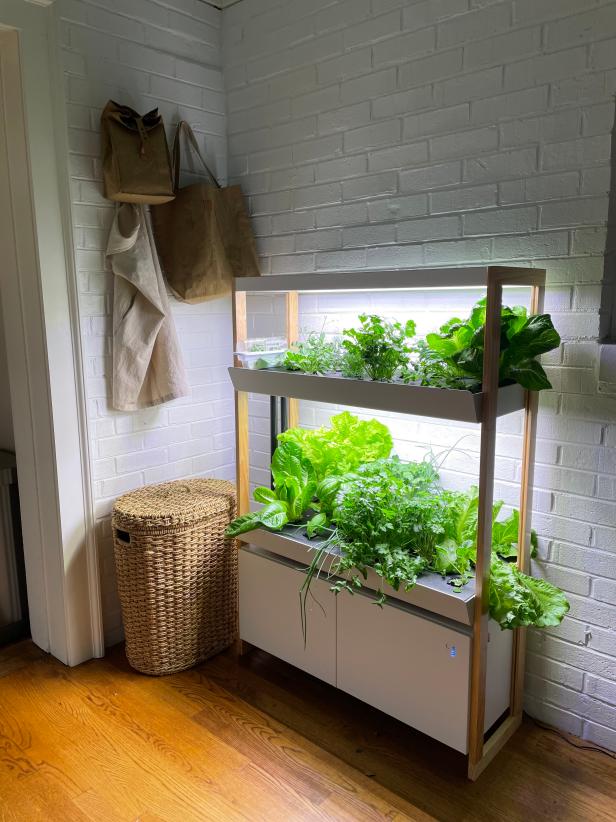
Laura James
Benefits of Rise Hydroponic Indoor Garden
- You can choose from multiple garden sizes, many of which can be expanded on in the future to fit your family's needs.
- The elegant design makes this hydroponic garden look more like a piece of furniture than a smart device. The rectangular shape of the Family Gardens fits nicely against walls, at the end of a kitchen island, behind sofas and other convenient locations. I also love that there's a cabinet space at the bottom. In addition to housing the water tank and pump that circulates water throughout the garden, there's enough space to store the extra seed pods, nutrients and other supplies out of view.
- Fool-proof instructions mean reliable harvests — if you can read instructions, you can grow vegetables, herbs and flowers in this indoor garden, no matter where you live or the size of your home.
- Growing a significant portion of your own produce at home means you don't have to worry about contamination from pesticides or recalls for bacteria as you do with grocery store produce.
- The ability to wait to cut your lettuce or herbs right before you intend to use them instead of days or even weeks before means you'll end up with fresher, better-tasting harvests.
- Since you can harvest only what you need when you need it, you'll also produce less food waste — no more slimy herbs abandoned in the fridge.
- After initial setup, the minimal maintenance — about 10 minutes per week — means almost anyone can find time to reap the rewards of this garden compared to an outdoor garden that requires a bigger commitment.
- Since you can reuse the indoor garden year after year without it getting damaged by weather, unlike outdoor raised beds, the money you spend on this system can result in a better investment over time if you use it regularly.
- If you still want to maintain an outdoor garden, you can use the LED lights on a Rise Garden as grow lights to start seeds for transplanting outside, too.
- You can grow all year round. Fresh arugula salad in mid-January, anyone?

Laura James
Arugula is an ideal plant to grow hydroponically in the Double Family Garden because it doesn't take up much space, grows quickly and is great for salads, grain bowls, sandwiches and pizzas.

Laura James
A handful of Buttercrunch lettuce for a salad barely made a dent in the harvest available in my Double Family Garden from Rise Gardens.
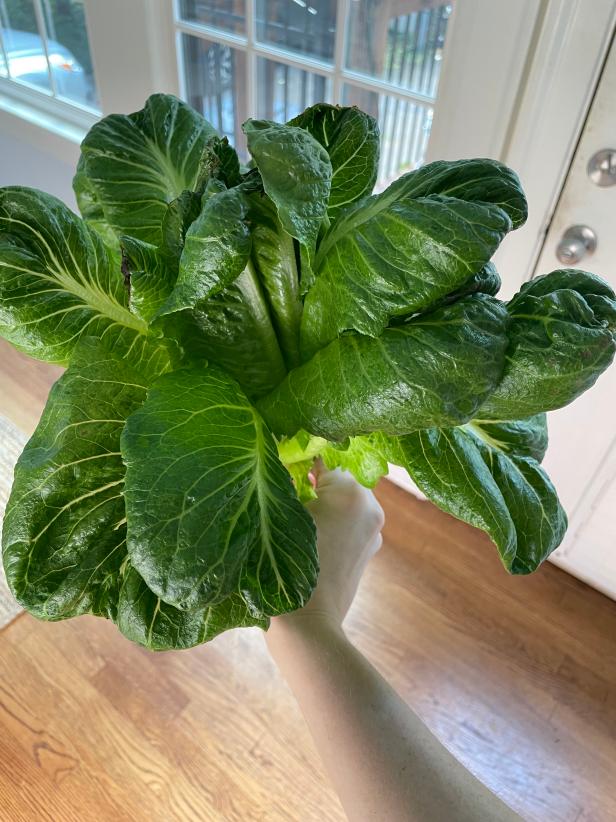
Laura James
Cons of Rise Hydroponic Indoor Gardens
- Due to the noise from the water pump and the LED grow lights, you'll likely want to place it in a spot that isn't near bedrooms, which might be challenging for smaller homes or apartments.
- Since you have to order nutrients and seed pods, there are ongoing costs to consider.
- Finding a balance between how much of what to grow and the proper spacing can take a bit of trial and error.
- For Double and Triple Family Gardens, the middle and top tiers don't allow for as much vertical growing space as the bottom, which limits the types of seeds you can grow there and how long you can leave them in the garden before they outgrow it. Many of the seeds Rise sells like eggplant and peppers aren't compatible with the size of the Personal Garden either. We recommend browsing the list of available seeds to get a feel for what you can grow; the product page for each seed will either say “Match With All Gardens” or “Grow in Family Gardens Only.”
- The garden works best when using the connected app, so if you're someone who wants to garden to get outside and disconnect from your phone or get your hands in the dirt, this garden system may not suit your needs.
- Shannon and I did notice a few discrepancies between the instructions in the manual versus the app, so it took a bit of trial and error to find what worked best for our gardens before we settled into a routine.
- At $349 for a Personal Garden and $679 for the Single Family Garden, the upfront cost is expensive, and there are ongoing costs and energy consumption to keep in mind, so if you expect to save money on your grocery bill, it will take several years to recoup the initial investment.
- Deep cleaning the larger family gardens, which Rise recommends doing about every 3-4 months to remove plant matter and nutrient buildup, is a bit of a pain, and you should set aside a couple of hours to tackle it. Cleaning the Personal Garden is much quicker due to the smaller size.

Laura James
Final Thoughts
I'm in love with this hydroponic garden! I can't explain what a luxury it is to have a variety of fresh herbs and greens to pick fresh at a moment's notice. Plus, I don't have to wonder if a spider is lurking underneath the leaves — ha! My partner and I eat a lot more salads and generally get more variety of vegetables and herbs in our diets with this garden in our home. Come spring, I plan to only grow a few larger tomato plants, some trellised snap peas and maybe some flowers, but otherwise, I'll stick to my Rise Double Family Garden to grow all of my leafy greens and herbs. As someone who cares about the aesthetics of anything I bring into my home, I think this is the most stylish large hydroponic indoor system on the market. While LED lights will never be subtle, the simple rectangular design makes the garden feel more like a bookshelf or piece of furniture rather than a tech device. As someone who prefers organic gardening and tries to avoid pesticides, I also love that I can grow food and not worry about contamination or the potentially harmful farming or labor practices involved to get it on my table.
Who Should Buy a Rise Garden?
With four size options, a Rise Garden is ideal for anyone who wants to reliably grow food at home any time of year. I think a Rise Garden would make an awesome splurge-worthy gift for someone who enjoys cooking and eating herbs and greens, whether for holidays, birthdays, weddings or really any occasion. I could see it making a great gift for couples and families, especially if they want to involve little ones in learning about growing food, or anyone who wants to extend their growing season or doesn't have space to have an outdoor garden. For gifting, I'd suggest either the Personal Garden or the Single Family Garden so that the recipient can add on levels if needed.















